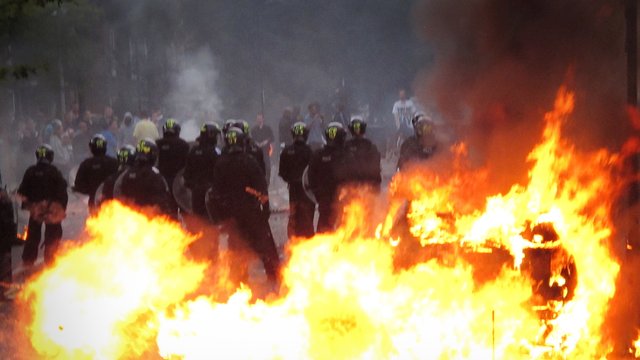On Air Now
The Capital Evening Show with Jimmy Hill 7pm - 10pm
26 June 2017, 12:17 | Updated: 26 June 2017, 12:21

Twitter could have been used to detect serious crime such as cars being set alight and shops being looted up to an hour earlier than they were reported to police during the 2011 riots, researchers have said.
Computer scientists from Cardiff University looked at how social media could be used as a source of information for police during major disruptive events, analysing data from the disturbances six years ago.
They found that in all but two reported incidents, a computer system automatically scanning Twitter feeds could have alerted officers earlier.
Co-author of the study Dr Pete Burnap, from Cardiff University's School of Computer Science and Informatics, said: "In this research we show that online social media are becoming the go-to place to report observations of everyday occurrences - including social disorder and terrestrial criminal activity.
"We will never replace traditional policing resource on the ground but we have demonstrated that this research could augment existing intelligence-gathering and draw on new technologies to support more established policing methods.''
The study comes after West Midlands Chief Constable Dave Thompson claimed on Friday that police would face "real challenges'' tackling a repeat of the 2011 riots following years of budget cuts.
It showed that on average the computer systems could pick up on disruptive events several minutes before officials and more than an hour in some cases.
The research team, who believe their work could enable police officers to better manage and prepare for both large and small-scale disruptive events, analysed 1.6 million tweets relating to the 2011 riots in England, which were sparked by the police shooting of Mark Duggan in London and started as an isolated incident in Tottenham on August 6 but quickly spread across London and other cities in England.
Vandalism and looting spread to Birmingham, Bristol and Manchester over the following few days, with more than 5,000 crimes committed.
A total of 16,000 officers were deployed in London on one night alone in a bid to quell the violence.
The researchers used machine-learning algorithms to look at each of the tweets, taking into account a number of key features such as the time they were posted, the location where they were posted and the content of the tweet itself.
The results showed the system could have alerted police to reports of disorder in Enfield, Greater London, one hour and 23 minutes earlier, they said.
Dr Nasser Alsaedi, who recently completed his PhD at Cardiff under the supervision of Dr Burnap, said: "Coming from a policing background myself, I see the need for this type of cutting-edge research every day.
"I wanted to develop a thesis that could have a real impact in real-world policing. I would like to see this implemented alongside the established decision-making processes.''